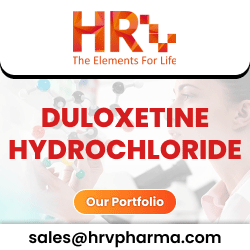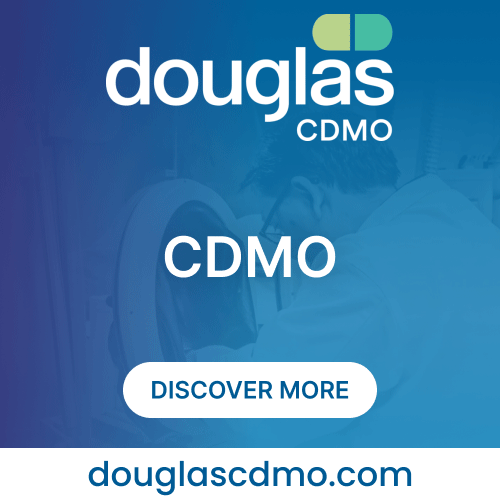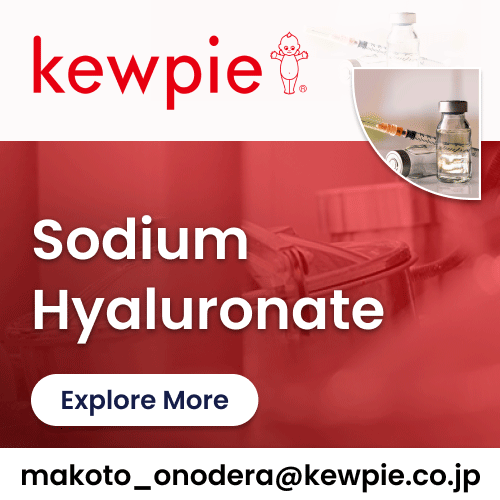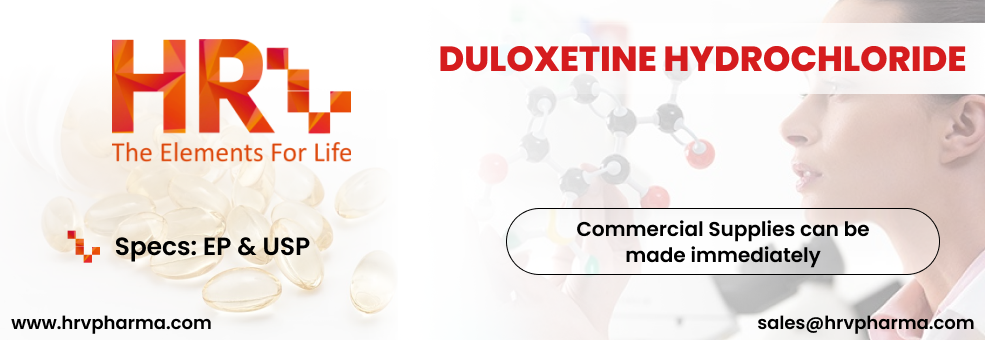What is Duloxetine Hydrochloride?
Duloxetine (brand names Cymbalta, Yentreve,
and in parts of Europe, Xeristar or Ariclaim) is a drug which primarily targets major depressive disorder (MDD), generalized anxiety disorder (GAD), pain related to diabetic peripheral neuropathy and in some cou
What is bioanalytical method development and validation?
Bioanalytical Method Validation, the term validation means the action of checking or proving the validity or accuracy of something. (BMV) guidelines for Duloxetine Hydrochloride are applied to bioanalytical methods that are used for the quantitative determination of Duloxetine Hydrochloride and its metabolites in biological matrices such as plasma, urine and preclinical studies and also for bioanalytical method validation for small molecules.
A compound can often be measured by several methods and the choice of analytical method involves many considerations. Analysis of drugs and their metabolites in a biological matrix is carried out using different extraction techniques like liquid-liquid extraction, solid phase extraction (SPE) and protein precipitation from these extraction methods samples are spiked with calibration (reference) standards and using quality control (QC) samples. These bioanalytical validations play a significant role in evaluation and interpretation of bioavailability, bioequivalence, pharmacokinetic, and toxicokinetic studies. In which different parameters like accuracy, precision, selectivity, sensitivity, reproducibility, and stability are performed.
Bioanalytical Method Development & Validation Service providers CROs / CDMOs have vast experience in Validated methods for Active Pharmaceutical Ingredients (APIs) for a variety of platforms including HPLC( High Performance Liquid Chromatography), RP-HPLC (Reverse Phase- High Performance Liquid Chromatography), RP-UPLC (Reverse Phase- Ultra Performance Liquid Chromatography), LC/MS/MS, GC/MS or GC/FID, ICP/MS, and ligand binding assays (ELISA or other cell-based assays). As both an in vivo and analytical CRO, they support bioanalytical method development & validation services of a variety of Active Pharmaceutical Ingredients (APIs) / Drugs.
Bioanalytical studies for Duloxetine Hydrochloride are typically conducted under GLPs, where product release and stability tests follow GMP quality requirements.
Limit Of Quantification (LOQ)
Lower limit of quantification
The LLOQ is the lowest amount of an analyte in a sample that can be quantitatively determined with suitable precision and accuracy (bias). There are different approaches to the determination of LLOQ.
LLOQ based on signal to noise ratio (S/N): This approach can only be applied if there is baseline noise, for example, to chromatographic methods. Signal and noise can then be defined as the height of the analyte peak (signal) and the amplitude between the highest and lowest point of the baseline (noise) in a certain area around the analyte peak. For the LLOQ values of Duloxetine Hydrochloride, S/N is usually required to be equal to or greater than 10. The estimation of baseline noise can be quite difficult for bioanalytical methods, if matrix peaks elute close to the analyte peak.
Upper limit of quantification
The upper limit of quantification (ULOQ) is the maximum analyte concentration of a sample that can be quantified with acceptable precision and accuracy (bias). In general, the ULOQ value of Duloxetine Hydrochloride is identical with the concentration of the highest calibration standard.
Bioanalytical techniques used in Validation of Duloxetine Hydrochloride:
Commonly used Bioanalytical chromatographic methods in bioanalytical studies for Duloxetine Hydrochloride are as follows:
Hyphenated techniques:
A hyphenated technique is combination or coupling of two different analytical techniques with the help of proper interface. Mainly chromatographic techniques are combined with spectroscopic techniques, For e.g. LC–MS (liquid chromatography–mass spectrometry); GC–MS (gas chromatography–mass spectrometry); CE–MS (capillary electrophoresis–mass spectrometry)
Liquid Chromatography-Mass Spectrometry (LC-MS/MS or LC-MS-MS):
Bioanalytical liquid chromatography-mass spectrometry or Bioanalytical Mass Spectrometry is a technique that uses liquid chromatography with the mass spectrometry. LC-MS or LC-MS-MS and rapid and sensitive high performance LC/MS/MS method is commonly used in laboratories for the quantitative and qualitative estimation of Duloxetine Hydrochloride and other drug products and biological samples. LC-MS has played an important role in evaluation and interpretation of bioavailability, bioequivalence and pharmacokinetic details of Duloxetine Hydrochloride. Through LC-MS biological samples are determined throughout all phases of method development of a Duloxetine Hydrochloride and its salts in research and quality control. HPLC (high performance liquid chromatography) & Gas chromatography are also important for the analysis.
New Analytical Method Development:
Method of analysis are being consistently developed, improved, validated, collaboratively studied and applied and also new analytical method has been developed. Chromatographic separations along with RP-HPLC and RP-UPLC method are considered as rapid stability indicating methods which depend on the samples to be analyzed. The chromatographic procedure is important for the systemic approach to LC-MS/MS method development. In most cases as desired separation can be achieved easily with only a few experiments. In other cases a considerable amount of experimentation may be needed.
Reversed Phase Chromatography:
Reversed phase packings such as C18, C8 are the most popular and most extensively used for Reversed Phase Chromatography . In addition to these C4, C2 and phenyl bonded are also available. Reversed phase sorbents usually involves conditioning with an organic solvent (e.g. methanol) followed by an aqueous solvent (e.g. water).
Normal Phase Chromatography:
Normal phase packings include silica, amino and alumina. Normal phase packing generally requires conditioning with a non polar solvent and elution is carried along with polar solvents. Compounds which have basic pH functional groups are retained by silica. However, polar compounds are irreversibly retained on a silica surface and in this case amino may be used.
GAS CHROMATOGRAPHY-MASS SPECTROMETRY (GC-MS)
Gas chromatography–mass spectrometry (GC-MS) is a method that combines the features of gas-liquid chromatography and mass spectrometry to identify different Duloxetine Hydrochloride salts within a test sample. Applications of GC-MS include drug detection, fire investigation, environmental analysis, explosives investigation, and Method Validation of Duloxetine Hydrochloride and other drug products.
The fundamental bioanalytical method validation parameters include precision and accuracy, sensitivity. Another innovative bioanalytical technique is solid phase extraction bioanalysis or SPE bioanalysis. There are many optimisation and validation studies have been carried out for the assessment of SPE for Duloxetine Hydrochloride.
A sensitive, specific bioanalytical method provided by Bioanalytical Service Providers are critical for a reliable pharmacokinetic experiment. It involves Comparative assessment of bioanalytical method validation several different techniques such as Method Transfer, Partial Validation, and Cross Validation of bioanalytical methods and other Chromatographic techniques, especially, high performance liquid chromatography (HPLC) coupled with different detection systems like LC-MS/MS bioanalysis method development, validation, and sample analysis and RP-HPLC and RP-UPLC techniques are some of the preferred techniques, routinely employed in bioanalytical laboratories as compared to any other method of analysis owing to their precision, accuracy, reliability and applicability to large-scale analysis.
The goal is to determine whether the obtained data for Duloxetine Hydrochloride are comparable. Cross validation assay and also include method transfer techniques consists of analysis of quality control samples (either spiked, incurred samples, or both), assayed under the different experimental conditions or different sites with validated methods of Duloxetine Hydrochloride, as appropriate. The same set of samples for Duloxetine Hydrochloride should be measured by both analytical sites or using the two different Bio-analytical methods. It is desirable that cross validation should be performed in advance of study samples being analyzed. It is recommended that the following rationale should be used in deciding how best to perform the cross validation.
QbD (Quality By Design) development bioanalytical method is a novel method for the analysis of drug products extensively used in the industries.
High performance liquid chromatography is one of the most accurate methods widely used for the quantitative as well as qualitative analysis of Duloxetine Hydrochloride and is used for determining Duloxetine Hydrochloride stability. Stability indicating HPLC methods are used to separate various drug related impurities that are formed during the synthesis or manufacture of Duloxetine Hydrochloride . This article discusses the strategies and issues regarding the development of stability indicating HPLC system for Duloxetine Hydrochloride given by Bioanalytical Service Providers. A number of key chromatographic factors were evaluated in order to optimize the detection of all potentially relevant degradants.For Example: Analytical QbD-based systematic bioanalytical HPLC method and HPLC-PDA for bioanalytical method along with RP-HPLC-PDA method . The method should be carefully examined for its ability to distinguish Duloxetine Hydrochloride from the impurities. Several drug products have been tested using analytical method and validation using HPLC/PDA. New chemical entities and drug products such as Duloxetine Hydrochloride must undergo forced degradation studies which would be helpful in developing and demonstrating the specificity of such stability indicating methods. At every stage of drug development practical recommendations are provided which will help to avoid failures.
HPLC is a popular technique as Bioanalytical Service Providers for monitoring the decrease in Duloxetine Hydrochloride and corresponding increase in degradation products due to its separating abilities. Stress Degradation HPLC is also one such novel technique. However, the HPLC method must be developed carefully to ensure that degradation products of Duloxetine Hydrochloride are both separated and detected appropriately.
A stability indicating analytical method (SIAM) is a validated analytical procedure that is provided under contract bioanalytical services of Duloxetine Hydrochloride which are accurately and precisely measures active ingredients (Duloxetine Hydrochloride) free from potential interferences like degradation products, process impurities, excipients, or other potential impurities, and the FDA recommends that all assay procedures for stability studies be stability indicating. It is recommended that forced degradation test or chemical stress or stress degradation studies can be carried out to determine if analytical methods are stability indicating prior to embarking on long term stability studies.
There are various stress testing analytical methods and techniques including stress testing bioanalytical methods, stress testing bioanalysis and also stress testing chromatography. There are also several method and development and validation techniques for UV- Visible Spectrophotometric technique.
The lower limit of quantification (LLOQ) is the lowest concentration of analyte in a sample which can be quantified reliably, with an acceptable accuracy and precision. The LLOQ is considered being the lowest calibration standard (see Accuracy and Precision). In addition, the analyte signal of the LLOQ sample should be at least 5 times the signal of a blank sample. The LLOQ should be adapted to expected concentrations and to the aim of the study. As an example, for bioequivalence studies the LLOQ should be not higher than 5% of the Cmax, while such a low LLOQ may be not necessary for exploratory pharmacokinetic studies.
Steps in LC-MS/MS Method Development:
Adequate knowledge about the sample is important for an effective method development. Some information regarding the analyte is necessary like:
• Number of compounds present
• Molecular weights of compound
• Sample Solubility
• Drug Stability
• Concentration range of compounds in samples of interest
Method Optimization:
During the optimization stage, the initial sets of conditions that were evolved during the method development are improved and maximized in terms of resolution and peak shape, plate counts asymmetry, capacity, elution time, detection limits, limit of quantization, and overall ability to quantify the specific analyte of interest. Bioanalytical method development Service Providers offers validated methods for Active Pharmaceutical Ingredients (APIs).
Mode of Separation Technique:
Since most of the pharmaceutical compounds are polar in nature so reverse phase chromatography is normally tried first in which a non-polar stationary phase is used. The mobile phase consists of water or buffer and organic phase (acetonitrile or methanol). Hence polar compounds get eluted first and non-polar compounds are retained for a longer time.
Selection of Stationary Phase/Column:
Prior to selection of column it is necessary to understand the properties of column packing material. Silica tends to dissolve above pH 8 and cross-linked polymeric particles, for example, polystyrene or poly methacrylates are used for separation of bases, which can withstand strongly basic mobile phase
Selection of Mobile Phase:
The main criterion in selection and optimization of mobile phase is to achieve optimum separation of all the individual impurities and degradants from each other and from the analyte peak. The parameters which need to be considered while selecting and optimizing the mobile phase are buffer, pH of the buffer and mobile phase composition.
Mass Spectrometric Detection and Data System:
Liquid chromatography/mass spectrometry (LC-MS) is promptly becoming the preferred tool of liquid chromatography. It is powerful analytical technique that combines the resolving power of liquid chromatography with the detection specificity of mass spectrometry. Liquid chromatography separates the sample components and then introduced them to the mass spectrometry. Mass spectrometry creates and detects charged ions.
Mass Spectrometry
Mass spectrometers are divided into three fundamental parts like ionization source, analyzer and detector.
Sample Introduction
The samples can be inserted directly into the ionization source or can also undergo some type of chromatography to the ionization source. This method usually involves the LC-MS technique in which mass spectrometer is coupled directly to (HPLC) or (GC).
Methods of Sample Ionization
Many ionization methods are available each having its own advantages and disadvantages. The ionization method used depends on the type of sample under investigation and the mass spectrometer available. Ionization methods are of many types and include the following:
a) Atmospheric pressure chemical ionization (APCI)
b) Electro spray ionization (ESI)
c) Fast atom bombardment (FAB) and,
d) Matrix assisted laser desorption ionization (MALDI)
Steps of MS/MS Analysis
1. Q1 (first quadrupole acts as a mass filter)
2. Q2 (Acts as a collision cell where selected ions are broken into fragments)
3. Q3- The resulting fragments are analyzed by third quadrupole.
Detection and Recording of Sample ions
The detector detects the ion current, amplifies it and then the signal is transmitted to the data system where it is recorded in the form of mass spectra. The m/z values of the ions are plotted against their intensities to show the number of components in the sample, the molecular mass of each component, and the relative abundance of the various components in the sample. The various types of detectors are supplied to suit the type of analyzer and the most commonly used include photomultiplier, electron multiplier and micro-channel plate detectors.
Requirement of Bioanalytical Methoad Validation:
It is essential to employ well-characterized and fully validated bioanalytical methods for APIs to yield reliable results that can be satisfactorily interpreted. It is recognized that bioanalytical methods and techniques are constantly undergoing changes and improvements, and in many instances, they are at the cutting edge of the technology. There are many bioanalytical service providers which offer Bioanalytical Services & Biomarker Testing. Bioanalytical Solution provider or Bioanalytical Method Development and Validation Service providers for APIs and Drugs offers project schedules without compromising quality and compliance. Various Bioanalytical Laboratory Solutions & Bioanalysis Services are committed support clients in drug development and clinical research.
It is also important to emphasize that each bioanalytical technique has its own characteristics, which will vary from analyte to analyte (E.g. Bioanalytical Method development for Duloxetine Hydrochloride). In these instances, specific validation criteria may need to be developed for each analyte ( E.g. Duloxetine Hydrochloride). Moreover, the appropriateness of the technique may also be influenced by the ultimate objective of the study. When sample analysis for a given study is conducted at more than one site, it is necessary to validate the bioanalytical method(s) at each site and provide appropriate validation information for different sites to establish interlaboratory reliability.
Bionalytical Method Development & Validation:
For the bioanalytical method development & Validation of Duloxetine Hydrochloride the process by which a specific bioanalytical method is developed, validated, and used in routine sample analysis for Duloxetine Hydrochloride can be divided into:
1. Reference standard preparation for Duloxetine Hydrochloride
2. Bioanalytical method development and establishment of assay procedure for Duloxetine Hydrochloride.
3. Application of validated bioanalytical method to routine Duloxetine Hydrochloride Bio analysis and acceptance criteria for the analytical run and/or batch.
Validation
It is accepted that during the course of a typical Duloxetine Hydrochloride development program, a defined bioanalytical validated methods of Duloxetine Hydrochloride will undergo many modifications. These evolutionary changes [e.g. addition of a metabolite of Duloxetine Hydrochloride, lowering of the lower limit of quantification of Duloxetine Hydrochloride (LLOQ) or LLOQ of Duloxetine Hydrochloride] require different levels of validation to demonstrate continuity of the validity of an assay's performance. Three different levels/types of Bioanalytical method validation, full Bioanalytical Methoad validation, partial bioanalytical methoad validation, Validation of bioanalytical chromatographic methods, and cross-validation, are defined and characterized for bioanalysis of Duloxetine Hydrochloride.
Full validation
Validated methods of Duloxetine Hydrochloride and APIs are necessary when developing and implementing a bioanalytical method for Duloxetine Hydrochloride first time for a new drug entity. If Duloxetine Hydrochloride metabolites are added to an existing assay for quantification, then full Validation of bioanalytical chromatographic methods the revised assay is necessary for all analytes measured.
Partial validation
Partial validated methods of Duloxetine Hydrochloride are modifications of validated bioanalytical methods of Duloxetine Hydrochloride that do not necessarily require full revalidations. Partial validation can range from as little as one assay accuracy and precision determination to a “nearly” full validation. Validated bioanalytical assay of Duloxetine Hydrochloride or Typical bioanalytical method of Duloxetine Hydrochloride changes that fall into this category include, but are not limited to, bioanalytical method transfers between laboratories or analysts, instrument and/or software platform changes, change in species within matrix (e.g., rat plasma to mouse plasma), changes in matrix within a species (e.g., human plasma to human urine), change in analytical methodology (e.g., change in detection systems), and change in sample processing procedures.
Cross-validation
Cross-validation is a comparison of two bioanalytical methods. Cross-validations are necessary when two or more bioanalytical methods of Duloxetine Hydrochloride are used to generate data within the same study. For example, an original validated bioanalytical method of Duloxetine Hydrochloride serves as the “reference” and the revised bioanalytical method is the “comparator.”
VALIDATION PARAMETERS
Linearity
Linearity assesses the ability of the method to obtain test results that are directly proportional to the concentration of the analyte (E.g. Duloxetine Hydrochloride) in the sample. The linear range of the method must be determined regardless of the phase of drug development.
Bioanalytical Assay of Duloxetine Hydrochloride: 80–120% of the sample concentration. This range must bracket that of the accuracy study, however. If accuracy of Duloxetine Hydrochloride sample APIs to be prepared at 80, 100, and 120% of nominal, then the linearity range should be expanded to a minimum of 75–125%.
Content uniformity method: 70–130% of the Duloxetine Hydrochloride concentration, unless a wider, more appropriate, range is justified based on the nature of the dosage form (e.g., metered dose inhalers).
Dissolution method: This requires ±20% of the specified range. In cases where dissolution profiles are required, the range for the linearity evaluation should start below the typical amount recovered at the initial pull point to 120% of total drug content.
Impurity method: Reporting level to 120% of the specification.
Impurity and assay method combined: One hundred percent level standard is used for quantification; reporting level of impurity to 120% of assay specification.
Selectivity (Specificity)
For every phase of product development, the Bio-Analytical method of Duloxetine Hydrochloride must demonstrate specificity. The method must have the ability to unambiguously assess the analyte of interest while in the presence of all expected components, which may consist of degradants, excipients/sample matrix, and sample blank peaks. The sample blank peaks may be attributed to things such as reagents or filters used during the sample preparation.
The method development of Duloxetine Hydrochloride must be able to differentiate between the analyte of interest and compounds with a similar chemical structure that may be present. For a high performance liquid chromatography (HPLC) identification test, peak purity evaluation should be used to assess the homogeneity of the peak corresponding to the analyte of interest.
Calibration model
The choice of an appropriate calibration model is necessary for reliable quantification. Therefore, the relationship between the concentration of analyte in the sample and the corresponding detector response must be investigated. This can be done by analyzing spiked calibration samples and plotting the resulting responses versus the corresponding concentrations.
Accuracy
Accuracy should be performed at a minimum of three concentration levels. For the bioanalytical method development & Validation of Duloxetine Hydrochloride, accuracy can be inferred from generating acceptable results for precision, linearity, and specificity. For impurity/related substances methods, it is ideal if standard material (Duloxetine Hydrochloride) is available for the individual impurities. Duloxetine Hydrochloride impurities are spiked directly into sample matrix at known concentrations, bracketing the specification level for each impurity. This approach can also be applied to accuracy studies for residual solvent methods where the specific residual solvents of interest are spiked into the product matrix.
Precision and repeatability
Repeatability reflects the closeness of agreement of a series of measurements under the same operating conditions over a short interval of time. For a Validation of bioanalytical chromatographic methods, repeatability can be evaluated by performing a minimum of six replicate injections of a single sample solution prepared at the 100% test concentration.
Reproducibility
Reproducibility expresses the precision between laboratories (collaborative studies, usually applied to standardization of methodology). Reproducibility only has to be studied, if a method is supposed to be used in different laboratories. Unfortunately, some authors also used the term reproducibility for within-laboratory studies at the level of intermediate precision. This should, however, be avoided in order to prevent confusion.
Stability
The definition according to Conference Report II was as follows: The chemical stability of an analyte in a given matrix under specific conditions for given time intervals. Stability of the analyte during the whole analytical procedure is a prerequisite for reliable quantification. Therefore, full validation of a method must include stability experiments for the various stages of analysis, including storage prior to analysis.
Recovery
As already mentioned above, recovery is not among the validation parameters regarded as essential by the Conference Reports. Most authors agree that the value for recovery is not important as long as the Value of Duloxetine Hydrochloride LLOQ, LOD, precision and accuracy (bias) are acceptable. It can be calculated by comparison of the analyte response after sample workup with the response of a solution containing the analyte at the theoretical maximum concentration.
Search companies, CROs, CDMO, laboratories providing bioanalytical methods and services on Pharmacompass
 Boost your online visibility by uploading your products, APIs, FDFs, intermediates, excipients, and services for free on PharmaCompass.
Rank higher among suppliers and expand your reach across the internet efficiently and cost-effectively.
Boost your online visibility by uploading your products, APIs, FDFs, intermediates, excipients, and services for free on PharmaCompass.
Rank higher among suppliers and expand your reach across the internet efficiently and cost-effectively.


















